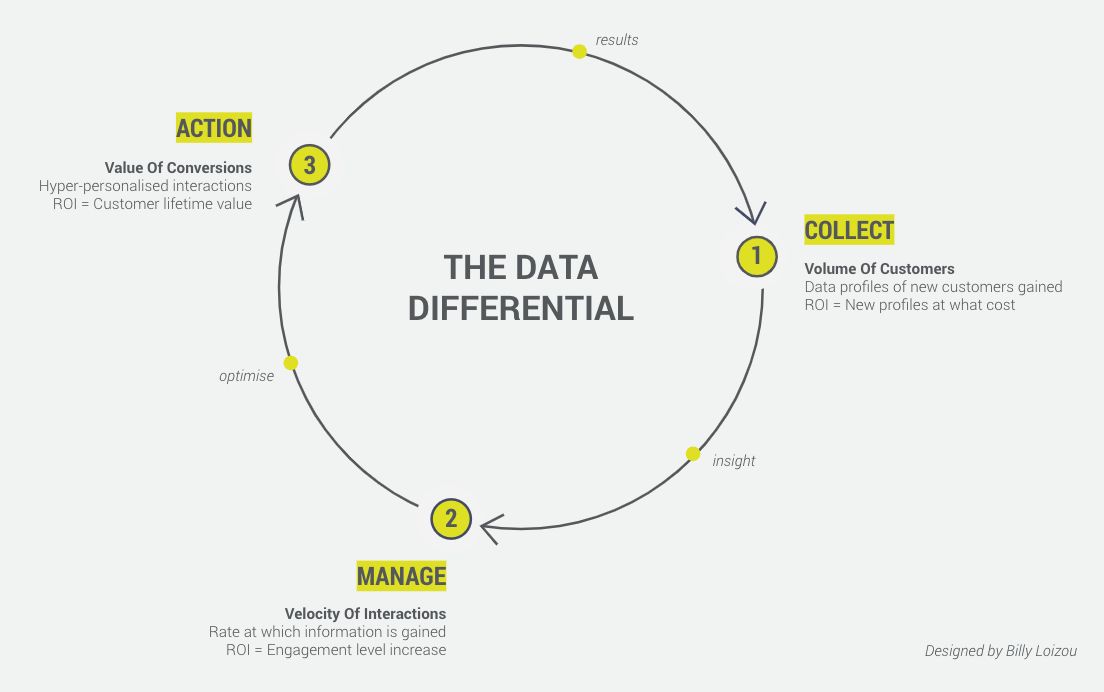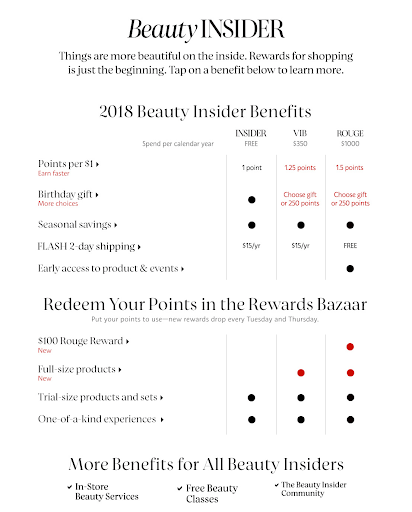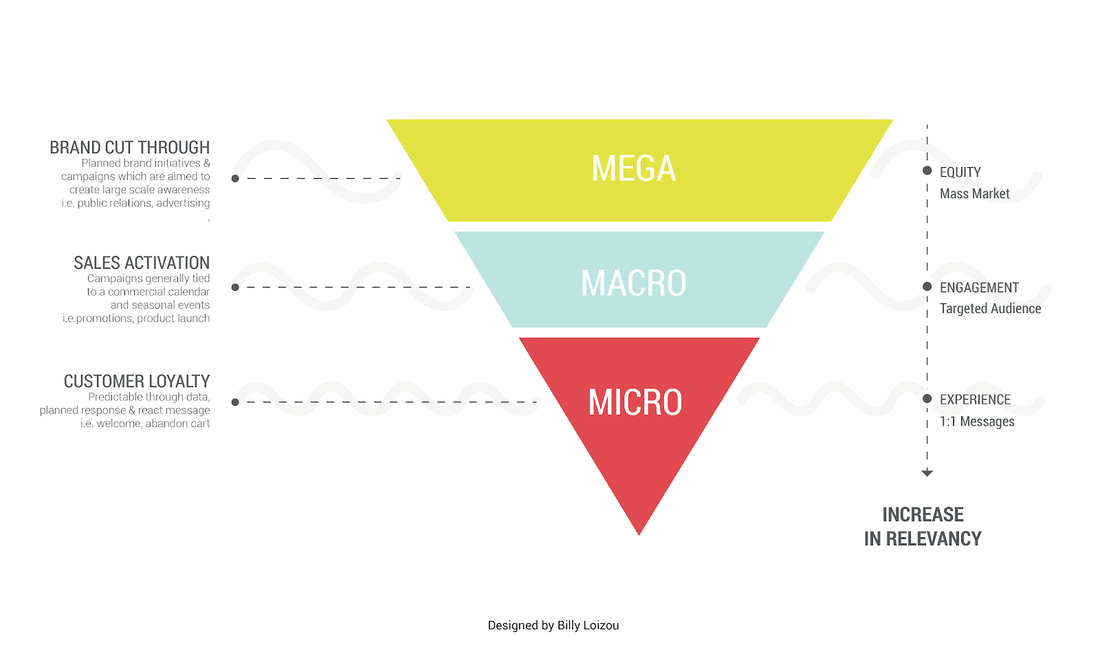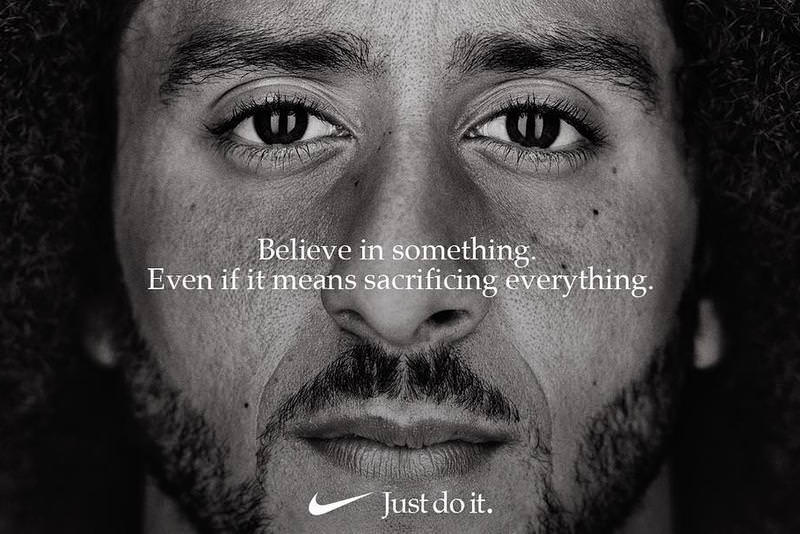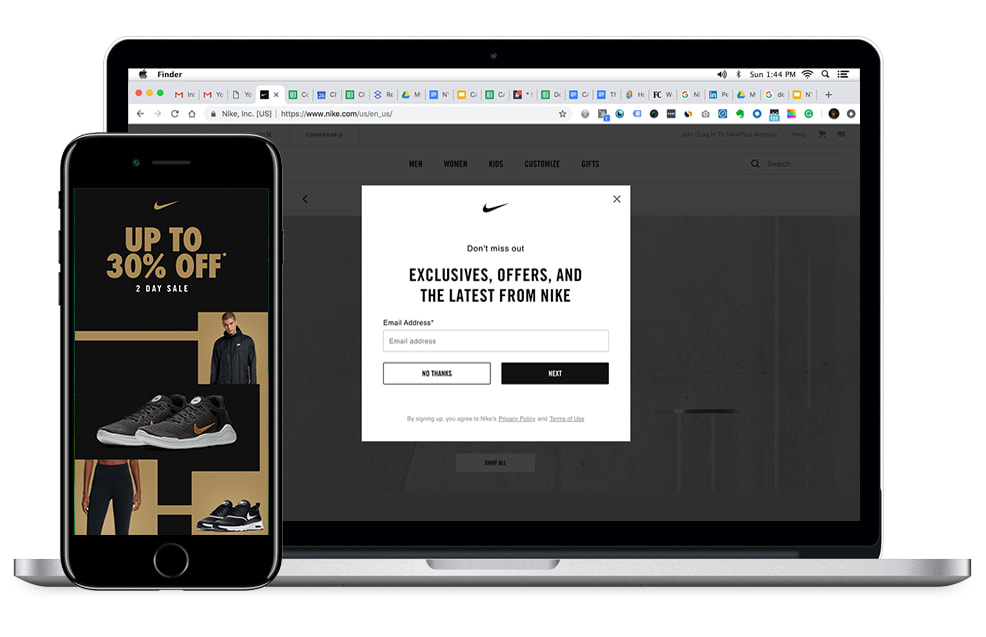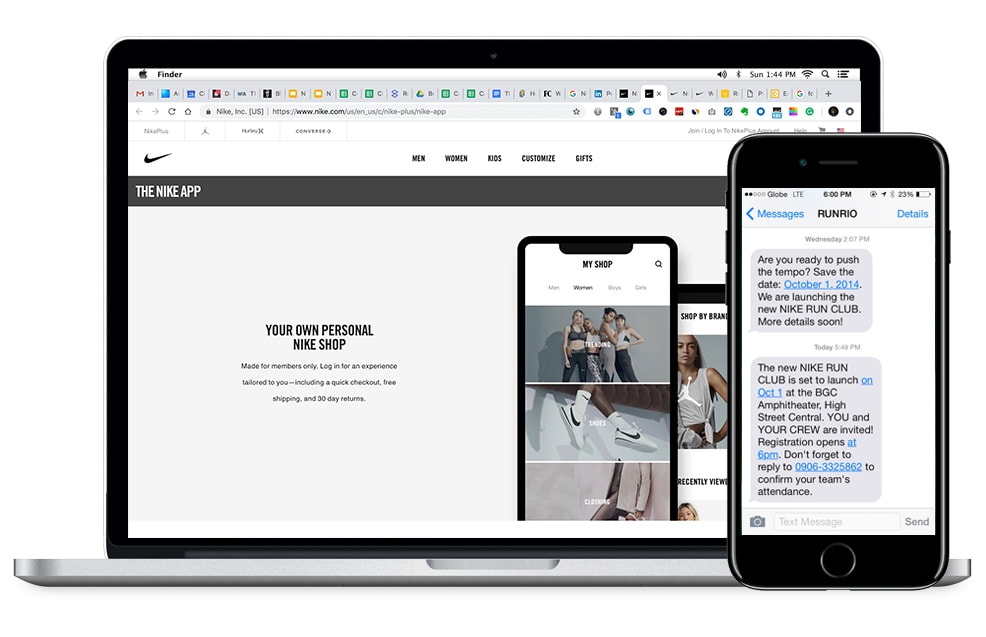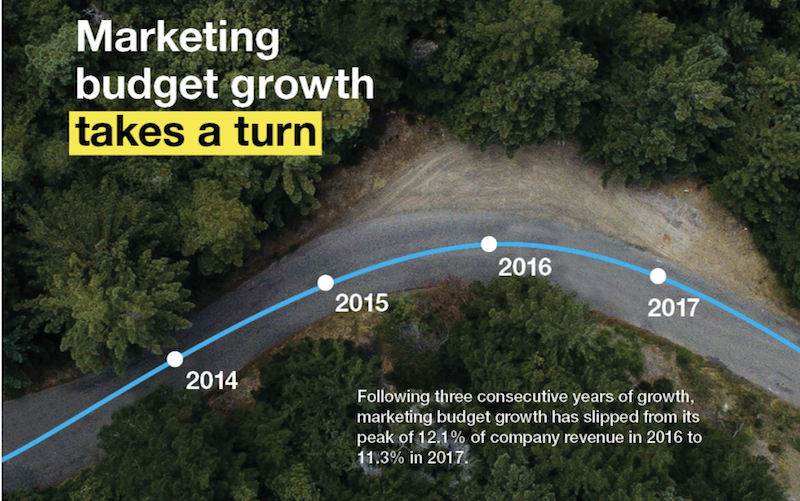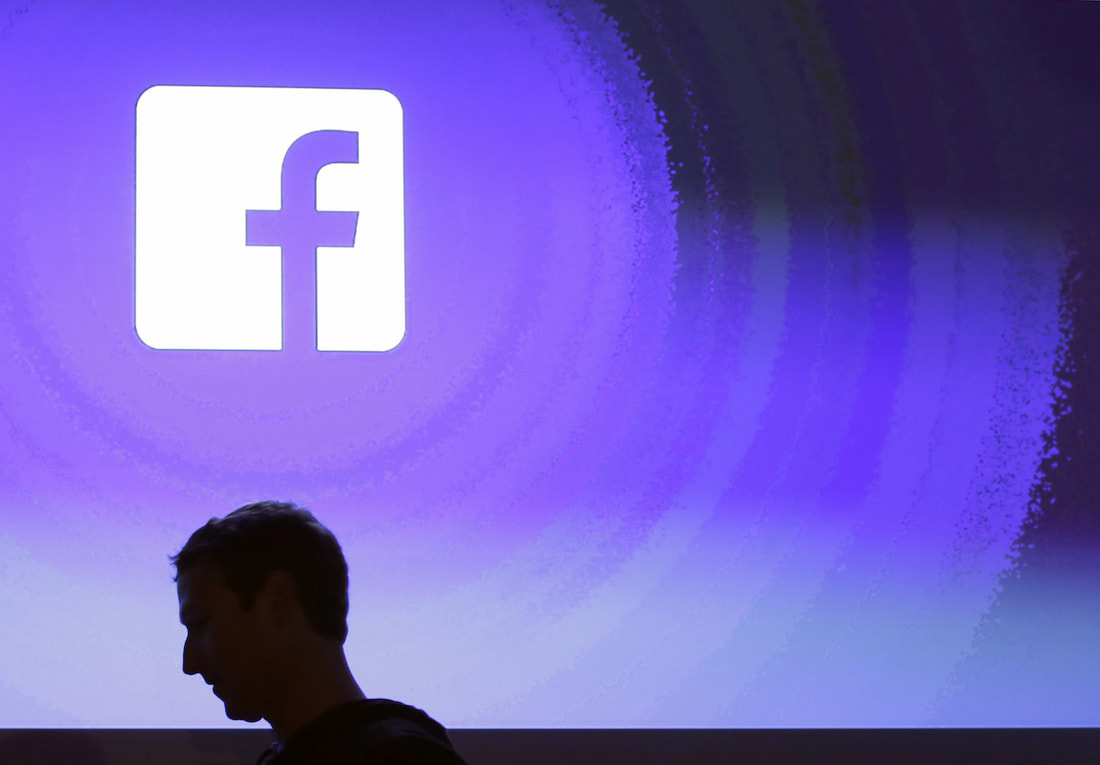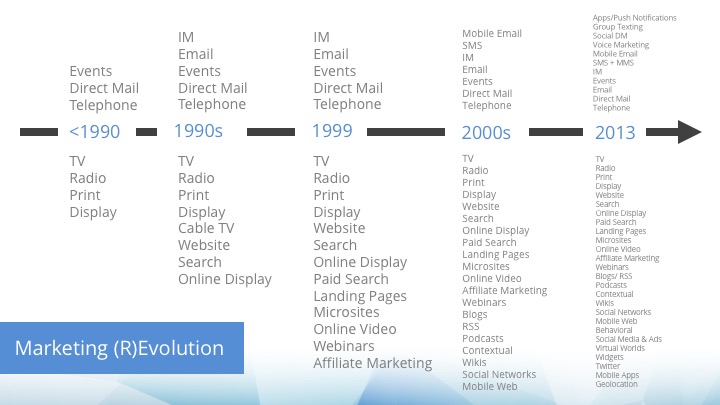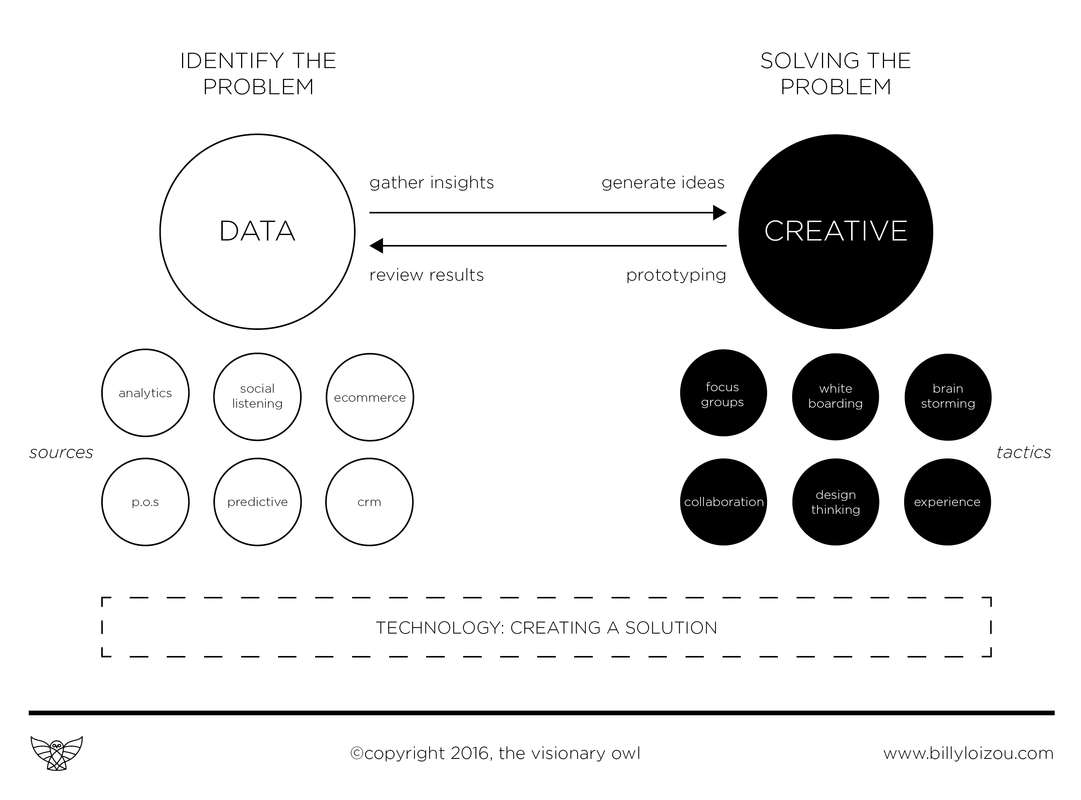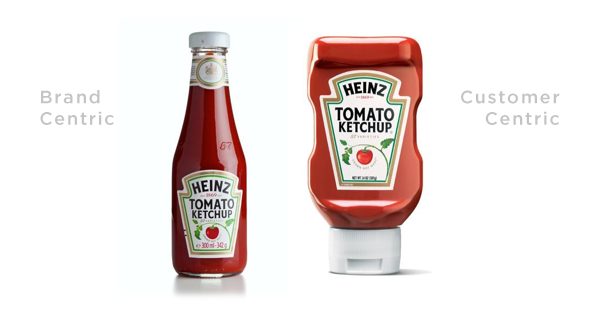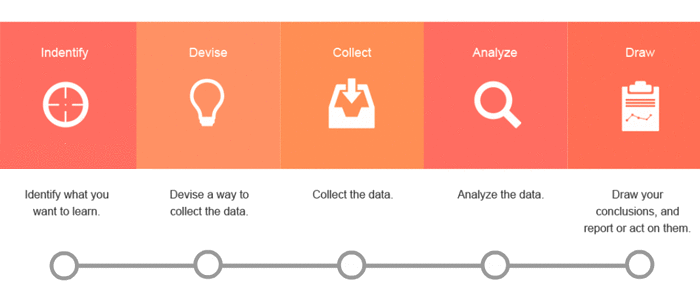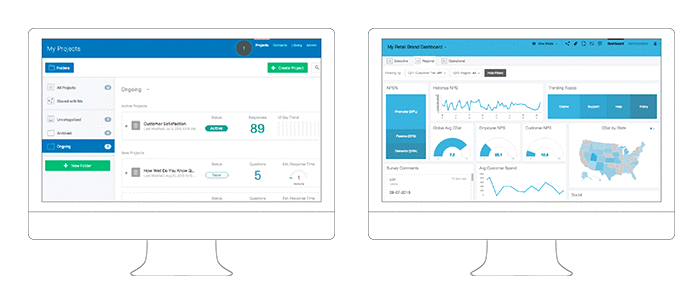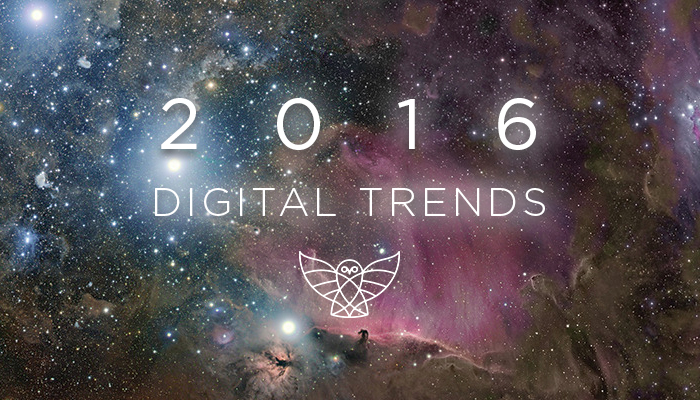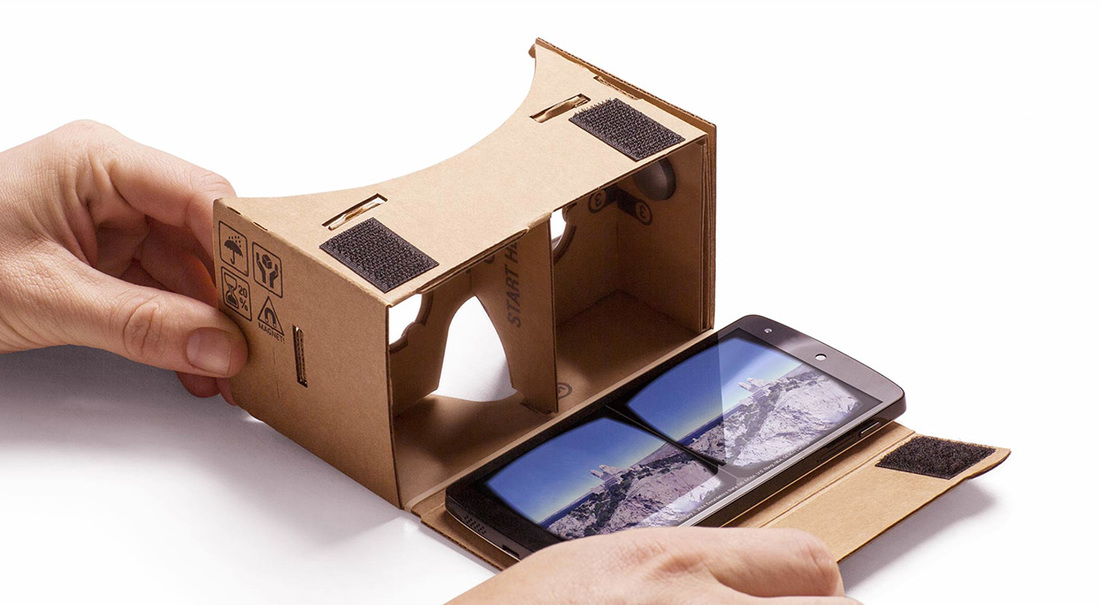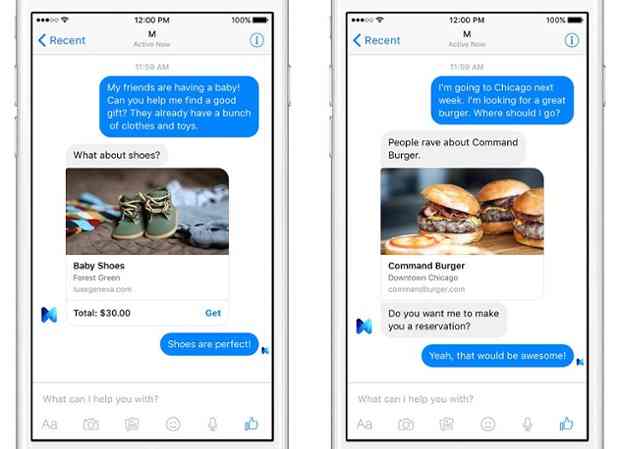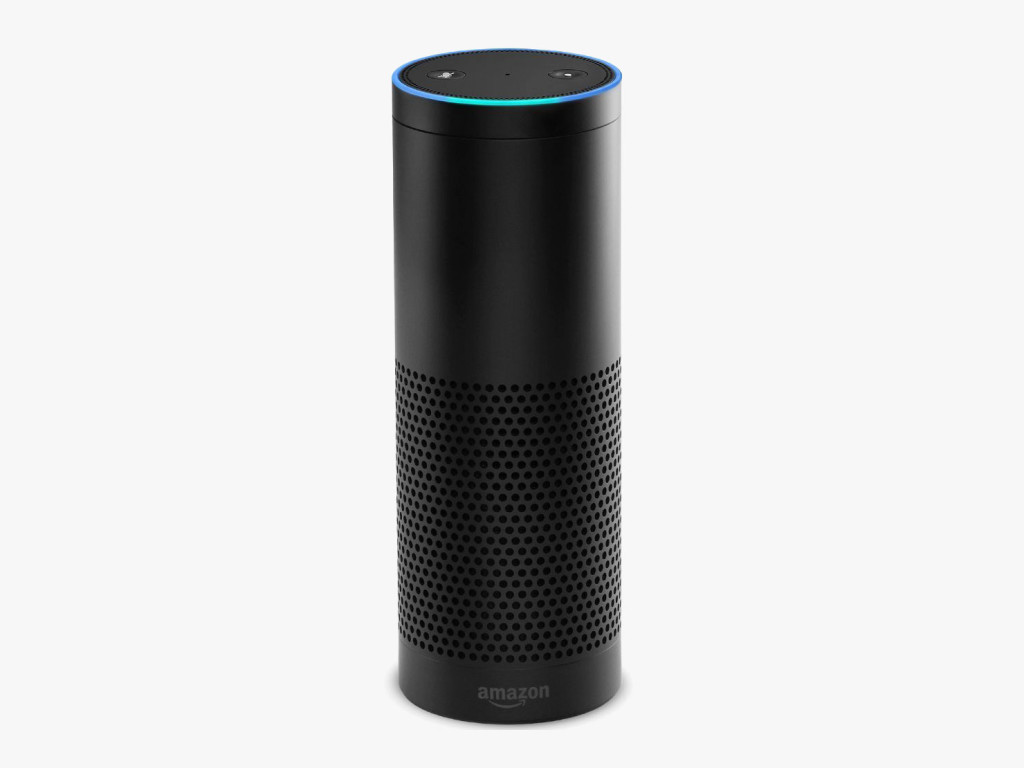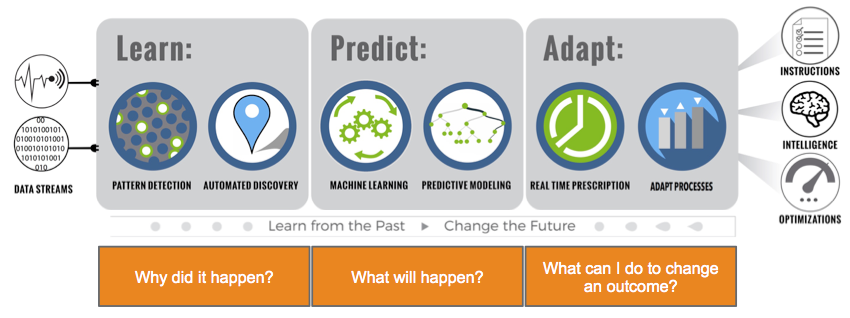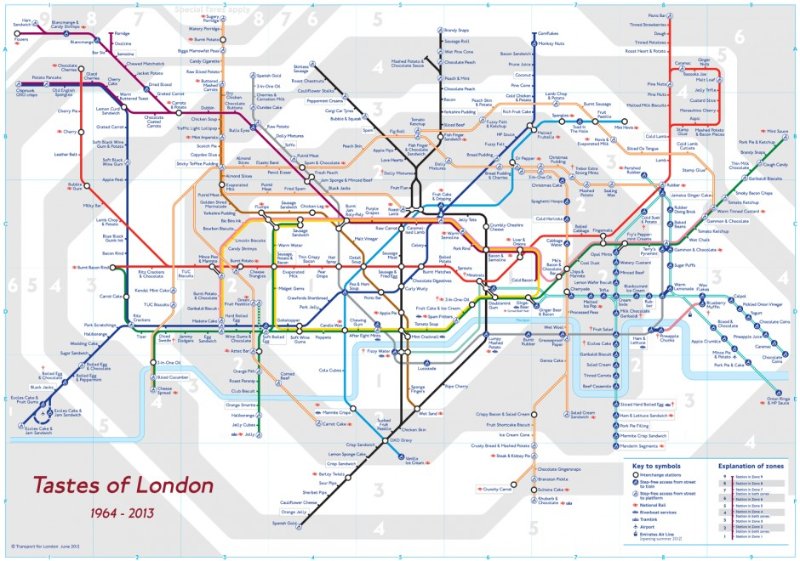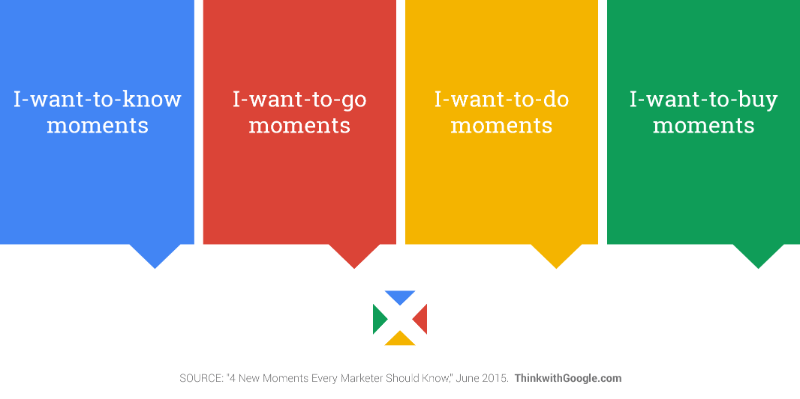|
Loyalty is not a new term to marketers, however, it is quickly becoming a winning proposition for brands all across the world. Since the emergence of digitisation through e-commerce and digital payment infrastructure a new chapter of loyalty programs has arrived. Marketers need to shift their focus from creating absent cookie cutter one-size-fits-all loyalty programs to immersive personalised and unique loyalty experiences. We need to start being responsive to customers across the channels of their preference, relevant to customers based on their changing needs and enable them to choose how they would like to be rewarded. Loyalty History LessonLet’s start with a brief lesson on how customer loyalty programs first kicked-off. Loyalty programs have stories dating back to the 18th century where retailers apparently used redeemable copper coins for future product purchases. The late 1900s saw the birth of one of the most well-known loyalty programs ever created: Frequent Fliers. Often regarded as the first full-scale card-based loyalty program of the modern era, American Airlines' launched their Frequent Flier program in 1981. The program revolutionised customer loyalty and now boasts over 50 million members in their revamped AAdvantage program. In 1995 Tesco launched the revolutionary loyalty club card. The science and messaging behind the program itself became quite sophisticated and changed the game for Tesco. Edwina Dunn (co-founder of dunnhumby) explains, "First and foremost it was a thank you and that thank you was money off, so people visited the store one more time, which led to millions and millions of pounds’ increase [in revenue]. They would occasionally put another item in their basket which translated to a huge sales uplift." Today, programs such as Starbucks Rewards is optimised for mobile and the app acts as a rewards program and a mobile payment method. Members will soon be able to choose how they would like to redeem their "stars" for a wider range of rewards. The app is a utility to drive customers in-store and bridge the loyalty gap across the digital and physical environments. Other loyalty programs also reward points on social media shares and referrals as it helps drive new customers and grow revenue - rewards are now almost endless. With the rise of digitisation consumers now expect more for their loyalty - the big question they are asking is how is the brand being loyal to me? Customer loyalty is about the company acting loyal to its customers, not just the vice versa. The 3 Customer TenetsThe true source of modern loyalty is to create lasting customer relationships and to recognise and reward them as individuals; not as nameless, faceless point collectors. To demonstrate your commitment to the customer beyond just purchases it’s time you start delivering on these three key tenets: 1. Be Responsive Relationships are built on two-communication. Today’s consumer wants to be part of a loyalty program that cares about what they have to say and responds to them on their preferred channel. With so many digital experiences available at their fingertips, customers have grown accustomed to good design and responsive interfaces. Providing access to your program via both website and mobile app has a significantly positive effect on customer satisfaction. More than 60% of consumers in Asia Pacific are now able to interact with their loyalty programs online. This implies that 40% of consumers can’t interact with their loyalty programs on their channels of choice^. Loyalty programs should offer members a succession of experiences from the moment they join to the time they first earn points, first receive a points statement, and redeem and beyond. Each of these experiences presents as a moment of inspiration and can have a very meaningful impact on how a member perceives and engages with a program. In order for brands to provide these experiences, they need to be able to respond instantly to any customer data signal, such as demographic, preference, behavioural or location. Businesses need access to this data in real-time so they can activate this data and communicate at the moment. 2. Be Relevant In a recent whitepaper created by MasterCard, when consumers were asked whether they will be willing to share personal information with their loyalty programs in order to receive a more relevant experience or benefits, 71% reported being willing to do so. Positive personalised experiences for a member is what it is all about, however, only 36% of consumers are highly satisfied with the level of personalisation in their current loyalty programs^. Companies need to start treating data like it’s a precious gift; customers need to be aware of what data you have about them and how you are using it. You will be surprised at how much information a customer is willing to share if you just ask them the question and share the benefit. It’s time to step away from the basic first name, last name, gender personalisation and start looking at the things that really matter. Companies need to start treating data like it’s a precious gift; customers need to be aware of what data you have about them and how you are using it. Use data to provide useful content, personalised offers and lucrative rewards based on the customer's data signals. Present opportunities for customers to respond to a wide range of challenges from photo, video and social challenges to polls and surveys, contests, games and sweepstakes. All these engaging brand experiences can be activated by leveraging your data and communicating through the customer's channel of preference, whether it be through email, mobile push, mobile wallet, SMS, social, website or in-store via point of sale. 3. Be Rewarded While your customers might be interested in the same types of products, they’re not all interested in the same kinds of rewards. Loyalty programs which offer only one type of reward can box itself into a corner by lowering its perceived value for prospects, especially in highly competitive discount-driven markets such as retail or cosmetics. This might be showing my age, but I remember the excitement of being able to choose my toy when purchasing a Happy Meal at McDonald's. I get the same enjoyment today when looking at the Virgin store and deciding what to spend my points on. The opportunity here is how can all businesses apply that capability to their existing loyalty programs. Smile.io’s Kristen Burkard says that "Combining transactional rewards with experiential ones will help your program stand out." The types of rewards can differ based on the customer like discounts, free swag and less tangible but equally valuable rewards like VIP access to sales. Sephora does this well with their ‘Beauty Insider’ program by allowing members to redeem their points in rewards. Find a unique way to add this to your loyalty proposition and give customers a choice on how they want to redeem their points. This gamification element will automatically increase the appeal of joining your program and add a level of personalisation that customers crave.
References ^ Achieving Advocacy and Influence in a Changing Loyalty Landscape - A MasterCard Asia Pacific Study It’s now been over 130 years since retail magnate John Wanamaker said “It’s the most famous problem in marketing. I know only half of my advertising works. The problem is, I don’t know which half.” The ingredient list for today's marketing mix just keeps getting longer. The question every marketer asks themselves is how do I balance and prioritize my efforts between short-term sales activity and long-term brand building? The Triple Threat Model In basketball, the most effective player on the court is the one who can impact the game in multiple ways and not just by scoring. The player is coined a “Triple Threat,” as they excel in all three key skills — passing, rebounding, and scoring. How does this relate to marketing, you might ask? Well, based on my experience in marketing within agencies, technology vendors, and brands — plus supported by research performed by the “Godfathers of Advertising,” Les Binet and Peter Field — I’ve identified three key moments that marketers should master. I crafted a model which aligns the mega, macro, and micro of marketing campaigns to enable short-term results and long-term brand building. Mega Marketing — Creating Brand Cut-Through Audience: Mass Market Medium: Broadcast, Print Media, and Out-Of-Home A successful mega-marketing campaign drives brand awareness, sparks conversation, and ultimately, fosters loyalty. Most big brands launch a campaign like this yearly and, based on the research from Binet and Field, emotional brand building is the key to long-term profits. Nike turned heads with their most recent 30-year celebration of the “Just Do It” slogan. They showed their brand mentality and they got people talking about them by using Colin Kaepernick as the face of the campaign, the ousted and unfairly maligned NFL quarterback who made headlines for his protest during the national anthem by kneeling instead of standing. Macro Marketing — Driving Sales Activation Audience: Targeted Segments Medium: Website, Display, Search, Social, Email & SMS Effective macro-marketing campaigns target specific audiences, demand engagement, promote value and ultimately, drive sales. Most of these campaigns are tied to a commercial or seasonal calendar such as Christmas, tax time or holiday periods and excel with the use of rational-based messaging. Nike is one of the few brands that doesn’t need to rely on discounts to drive sales. They provide their customers value by encouraging them to sign up to exclusive content, products, and offers via email. Throughout the different seasons, they introduce new looks and trends straight to the inbox and their customers anticipate each new release. Micro Marketing — Earning Customer Loyalty Audience: 1:1 Messaging Medium: Email, SMS, Push, Direct Mail Data-driven, micro-marketing campaigns typically are hyper-personalized and loyalty-focused, and ultimately, enable memorable experiences. Most of these campaigns are predictable in nature and are triggered based on a customer’s interaction with a brand. Nike+ is a beautifully designed rewards program for athletes. Customers are motivated by the ethos of authentic athletic performance. They have created a rewards program that is tailored to each member and delivers personalized product discounts that last your entire birthday month and exclusive VIP experiences. The more you shop and use the Nike+ app the more tailored it becomes. What You Can Do Today To Impact Your Marketing Effectiveness
After spending the last 10 years of my career working with marketers and leading customer experience with some of the world’s most trusted brands, I thought it was about time I grounded myself in my own research project – to speak with and learn from 50 marketers in just 50 days. To be honest it seemed like an achievable challenge – didn’t anticipate that organising 50 different marketers diaries was near impossible. I was successful however and the conversations were invaluable. I was lucky enough to meet with CMOs from all over Asia Pacific across retail and banking to not-for-profit. Importance of customer experience One thing that we all agreed on during the 50 days was how customer experience continues to become more important and is quickly becoming the new competitive battleground for brands. The investment today in global customer engagement is north of $3.6 billion dollars according to multiple marketing reports. Marketers understand the importance of technology and data to deliver great customers experiences, however most aren’t achieving the results they were promised or thought were possible. Decreasing budgets The fact that many marketers aren’t getting the return on their technology investment may have something to do with the fact that marketing budgets have decreased for the first time in four years according to Gartner’s latest Spend Survey. Marketing leaders must now justify their past spend and show the returns they deliver. It is clear that expectations in the boardroom are not being met and it’s time to show results that are actually delivering real business outcomes. The biggest hit has been the investment in martech as it has fallen by 15%. CMOs are pulling back on last year’s high spending commitment amid concerns over marketing’s capability to acquire and manage technology effectively. The need today is far greater than it has ever been in re-evaluating your technology investment, reviewing the capabilities of your resources internally, and creating alignment across the whole business. Setting Priorities So what becomes extremely important as marketing budgets are shrinking? Combining the right marketing platform with the right people to execute your strategy successfully. Over time the obsession for marketers investing in shiny objects has led them to some cold hard truths. In the Mad Men era marketers invested heavily in agencies to think creatively about how they could advertise and communicate their brand to the masses. Many strategically sound concepts were presented. Fast-forward to today and marketers are investing heavily into marketing clouds and futuristic-sounding technology to advertise and communicate their brand at a 1-to-1 level. Technology is not a strategy. It is an enabler to help you implement and achieve your strategic vision. Mark Ritson, award winning columnist and marketing professor, said shiny objects such as virtual reality, augmented reality, artificial intelligence etc. are distracting us from our real jobs and the big challenges that we are all facing. He said, “The history of marketing is not filled with death. It is filled with evolution and change. Disruption use to look like a VHS recorder. When it was launched in Australia we all assumed that cinemas would die. Except they didn’t. They thrived and they had their best decade.” History tells us we learn to live together and blend together. Things slow down. This same theory goes for marketing. The tactics may be changing but the fundamentals stay the same. Use design thinking Elon Musk has pioneered and transformed industries with the launch of Tesla and SpaceX. Musk is the type of businessman who learns by doing. His businesses thrive using the principles of design thinking, in which they are constantly prototyping and failing quickly in order to progress. Tesla however has faced mounting public pressure amid a production slowdown for its Model 3, its lower-priced car. The company recently revealed that it missed its target to produce 2,500 cars a week, disappointing investors. Musk made a bold statement following the news. “Yes, excessive automation at Tesla was a mistake. To be precise, my mistake. Humans are underrated.” In this one statement he summarises the issue most marketers are facing: the relationship between people and technology. Many of us have shifted to relying more on technology than human beings. Rely on people In today’s marketing landscape, you should be increasing your reliance on people and partnerships that align with your desired business outcomes. Businesses need to create internal alignment across five key organisational pillars: Brand, Strategy, Technology, Performance, and Experience. There isn’t a magic marketing machine that will do all of this for you. You need great colleagues. You need excellent marketing partners. And in many cases, you’ll want a level of service with your marketing technology. Software has led many companies to create self-service portals and automated support, and marketers are starting to feel this backlash. Despite technological advancements, sometimes you need a pat on the back and to hear someone say, “we’ve got that covered for you.” People aren’t talked about as much these days. We’re intrigued by AI, machine learning, VR, AR, and other newer technologies. After many years of marketing to marketers and cramming in 50 meetings with marketing leaders into 50 days, it is clear to me that we can start to solve the marketing performance problem with people, strategic alignment, and plain-old execution.
I was on the phone to a friend of mine the other day, and I was talking about how much I was craving Vegemite. A few hours later, when I opened up Facebook, the first thing I saw was an ad for Vegemite!! How weird!! Has Facebook been listening to my phone calls? Does this sound familiar?...Well it could actually be true!
Earlier today I came across a tweet from Dylan McKay claiming that he'd downloaded his Facebook data as a zip file and it bizarrely included his entire call and sms history. See for yourself.
So I decided to do some digging into my own Facebook data. After downloading my personal data directly from Facebook I realised the immense amount of data they have available on me i.e. my posts, messenger activity, timeline, friends, places I have been, ads I have interacted with, instagram specific interactions and strangely my entire phone contact list. I admit, I was aware of most of this data being available however not my phone contact list. Access your own Facebook data by going to settings and clicking on the "Download a copy" link. Example below. 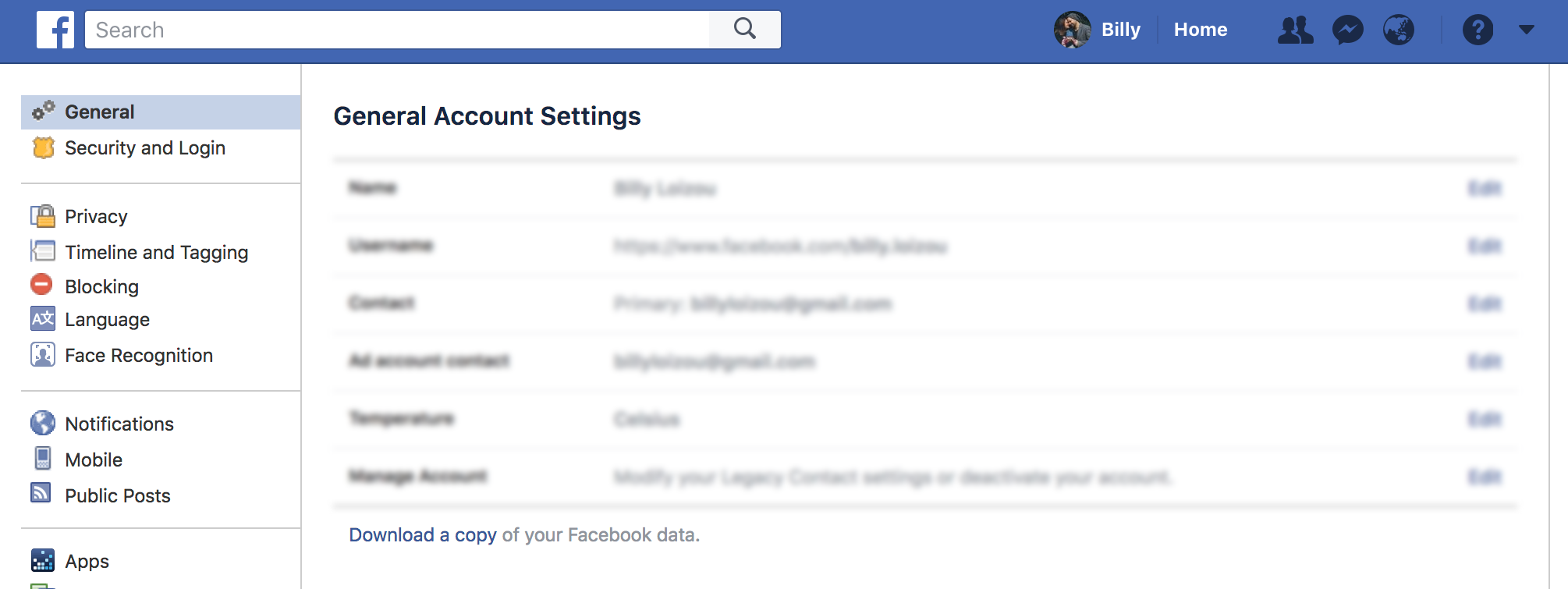
Companies regardless of them being a fashion retailer or technology giant need to give control back to their customers. Allow your customers access to control the information you have, the information you collect and more importantly the information you use. This should also be designed in a way that is clear and simple to understand - not designed in a way that is strategically complicated so users abandon the process.
It seems Facebook has worked tirelessly over the years to gather as much data on users as it can – and to profit from it. As of the fourth quarter of 2017, Facebook had 2.2 billion monthly active users. Facebook's revenue grew from 7.87 billion in 2013 to 40.7 billion US dollars in 2017, it accumulated a net income of 15.9 billion US dollars and majority of that revenue was generated via advertising. Why am I not surprised?
In 2004 Zuckerburg used the term “Dumb fucks” when he described the users of Facebook for trusting him with their personal data. Zuckerberg also talked about what Facebook insiders called radical transparency, an idea that partly amounted to an insistence that old ideas about privacy were becoming outdated. “To get people to the point where there’s more openness – that’s a big challenge,” Zuckerberg said. “But I think we’ll do it. I just think it will take time. The concept that the world will be better if you share more is something that’s pretty foreign to a lot of people, and it runs into all these privacy concerns.”
Facebook has gone to great lengths to convince members of the public that it’s all about “connecting people” and “building a global community”. In 2016 this became the tale of Facebook & Cambridge Analytica, a saga that highlights the awful mess that the biggest player in billions of online lives has enabled. If you aren’t familiar with the story Cambridge Analytica spent more than $1 million dollars harvesting personal data through Facebook so they could micro-target you with advertising. Advertising which Christopher Wylie (ex Director of Research at Cambridge Analytica) claims is grossly unethical and uses new constructs of psychology to target you based on personality. He say’s they used apps such as games that have special behaviours that harvest your data and pull all your friends data while they are at it. Once they have this data they know how to talk to you, via what medium and how often they have to show you a message in order to change your behaviour. This strategy is what most claim was used in the 2016 US presidential election which led to Donald Trumps success and in the same year Brexit. Chris says they are responsible for creating the worlds largest psychological warfare tool and full service propaganda machine who can influence how people behave and react. They did this by whispering in the ear of each and every voter using Facebook. In my opinion this is one of the worlds biggest data breaches. To dig more into the revelations surrounding the Cambridge Analytica scandal click here. "People change culture and if you change the people, in theory, you can change the culture. If you want to win a war in this example a political war you need to start by building cultural weapons. Once you destroy the existing culture, you can rebuild it however you want!” - Christopher Wylie explaining the psychological warfare tools they created. WHAT DO I PLAN TO DO ABOUT IT?
Well I’m not Elon Musk and won’t make headlines about joining the #DeleteFacebook movement, but I plan on taking a stance. Data should be treated like a precious gift and until Facebook start to take peoples data more seriously I will be deleting my personal account.
“We have a responsibility to protect your data, and if we can’t then we don’t deserve to serve you,” - Mark Zuckerburg
Actions speak louder then words Mark. Make it happen!
In today's fast paced world a lot of us get caught up in the noise of the day to day grind and forget about the big picture. We start to think that the company we work for and a job title defines who we are. From time to time we all need a bit of perspective, so last weekend I felt like I needed to recalibrate my thoughts and I decided to jump into a sensory deprivation tank for an hour (I can’t recommend this enough, if you are into mindfulness meditation then give it a shot.) What came out of this experience were these 12 life lessons that I thought I would share with you.
I know what you are thinking….."You are just over 30 years old, what do you know about life lessons." I completely agree with you, I'm not Steve Jobs, Bill Gates or Richard Branson; however the last 10 years for me have been quite the adventure and I feel the need to share.
Marketing is always in evolution. It has to adapt to the sub-conscience of the generations in order to stay present and reach its targets. Gone is the Don Draper golden era of marketing, no longer do you only have to worry about TV, Radio, Print & Display. Thanks to the explosion of technology, marketers now need to manage and communicate to customers across hundreds of potential touch points. See the Marketing Revolution illustration below (ExactTarget.) A few other factors to be mindful of is that the population has grown, media has expanded, customer expectations have increased and today's competition is fierce. The job of a marketer today is no longer just about creating brand awareness, it's about growing a database, driving sales and most important of all creating remarkable customer experiences. What are the skills a marketing professional needs to be successful?1. Empathy The ability to understand and share the feelings of another. In the advertising and marketing world find the 'human story' and understand the perspective of your customers. "I ask myself things like, What would a 5 year old think of this? What would a 70 year old think? Empathy is king!" 2. Customer Journey Management Enabling organisations to effectively segment customers and build behaviour-driven journeys through the creation of automated activities prompted by real-time events. These activities send the right message, through the right channel, at the right time, to the right individual, based on their behaviour. The key to doing this successfully is researching and understanding the journeys your customers go through when interacting with your company; whether it be for a product, service, issue, delivery etc. 3. Marketing Automation There are plenty of technologies designed for marketing departments and organisations to more effectively communicate on multiple channels (such as email, social media, print, websites, etc.) Marketing automation technologies also create operational efficiencies as they can automate repetitive tasks such as data imports. Here are few marketing automation tools: - Salesforce Marketing Cloud - Adobe Marketing Cloud - Marketo - Silverpop - Autopilot 4. Technology Understanding A marketer’s job is no longer about just managing the advertising agency. They now need to understand the functionality of multiple cloud based platforms and systems. I like to call it understanding your businesses 'Marketecture'; which includes everything from CRM, e-commerce, social listening, marketing automation, business intelligence and analytics. 5. SEO & SEM Thanks to smart phones and the quick accessibility we have to the internet, according to Google it has forever changed the way we live - It has fractured the customer journey into hundreds of real-time, intent-driven micro-moments. SEO and SEM has never been more important as you fight to identify search terms that will give your website higher ranking. Optimise your content, website, and blog for organic earned search. 6. Data Analysis Yes...unfortunately you need to understand data, but you don't have to be a Data Scientist. Data holds you accountable, it highlights where you are successful and where there are areas for improvement. Basic data visualisation tools can help you read the data and benchmark it against previous campaigns or even industry statistics. For example Google Analytics is a great tool to analyse: - Where leads are coming from - Average time on site - Bounce rate - Average transaction value - Most viewed products etc. See below for an overview of how data and creativity intersect: 7. Collaborative Consumption
Marketers need to understand and recognise the new business models which are disrupting industries. Collaborative consumption describes the shift in consumer values from ownership to access. Together, entire communities and cities around the world are using network technologies to do more with less by renting, lending, swapping, bartering, gifting and sharing products on a scale never before possible. From Airbnb to Uber to Taskrabbit, collaborative consumption is transforming business, consumerism and the way we live for a more fulfilling and sustainable quality of life. 8. Targeted Online Advertising A recent study from Salesforce & Facebook showed that sending an email and a social ad about the same campaign to the same group resulted in 22 per cent uplift in conversion and 77 per cent uplift in reach. Salesforce's new Advertising Studio allows businesses to send targeted ads to a customers based on their CRM data. 9. Email Marketing For every $1 invested, email marketing generates an average return of $38. Email still generates on average around a 21% open rate and 3.5% click through rate. Consumers today receive more emails than ever before and claim to have inbox fatigue - however marketers have to become better at mastering the art of timely and targeted emails. 10. Mobile Marketing With over 50% of emails now being opened on mobiles and the boom of the app world - we now need to think mobile first. Many brands still have a website that is not mobile responsive and have no apps to make it easy for customers to engage with you. Think about the potential of geo-location push messages from a service perspective; for example you have entered the airport ready for your flight interstate and receive a real-time alert about the flight delay, followed by an offer to head into the Qantas lounge for free. 11. Social Listening & Engagement A brand is the sum of the conversations being had about them. Since the launch of social media, customers have found it easier to praise or call out brands about their experiences. A smart marketer would have their finger on the pulse and be listening to online behaviour to identify areas of concern or competitive advantage. Take a look at Salesforce's new Social Studio product for an overview. 12. User Experience Pixel perfection and eye for detail is important. Design isn't just how something looks and feels, it's also about how it works. It's important to understand the different devices that consumers use like a desktop, tablet and mobile; but also how they use them. 13. Content Creation Content is the foundation for all marketing according to Joe Pulizzi. You need to start blogging, creating engaging images, infographics, free eBooks, and much more. Content is the main driver to generating leads. 14. Business Savvy While I don't expect all marketers to have an MBA - they need to understand some simple metrics such as average transaction value (ATV), customer lifetime value (CLV), net promoter score (NPS) and return on investment (ROI). The list could go one but I thought I would keep it short. The line between service, sales and marketing is blending and every campaign you send needs to have a clear measurable goal. If there is no goal, then ask yourself why are you sending it in the first place? 15. Prototyping Mindset With the adoption of Design Thinking it has allowed employees to take their ideas and make them reality in a cost effective way that doesn't impact the business. Anyone can have an idea - it's the critical process of making that idea a tangible prototype that drives innovation. A prototype can be interacted with and reveal to the creator some valuable learnings to refine over time. We need to embrace that everything in life needs continuous improvement. Every customer has a voice...yet not every company listens. Successful companies use their customer as their secret weapon. Accessing that secret weapon isn't difficult; create customer focus groups, conduct market research, invest in social listening or merely send out timely customer surveys across the customer journey via digital channels like email, web and sms. Sounds simple doesn't it, but why do most companies take a blind eye? Is it because it's too difficult, too expensive, too confronting? Most of the time it is just easier to keep doing what you have always been doing because it has worked in the past. It is fair to say that most large Australian companies have a monopoly on the market so their is no real need to change. Until the competition sneaks up behind you and is starring you in the face i.e the taxi industry vs. Uber, hotels vs Airbnb and retailers vs Alibaba. All three companies don't carry any inventory, yet drastically improve customer service and provide new revenue opportunities for those willing to leverage their technology. Companies need to go from being brand centric to becoming customer centric. Heinz are a perfect example of a brand who listened to their customer and implemented their recommendations. The sauce that they produce is of great quality, however the user experience of trying to get the sauce out of the glass bottle is extremely clumsy. If you make some subtle design changes like flip the bottle upside down and change the material (glass to plastic), the experience changes dramatically. “People want what’s best for them, and they can switch on a dime, because there’s always a new disruptor disrupting the last disruptor. So companies should just strive to keep changing and adapting to their customers’ needs.” Hearing the voice of the customer is essential for effective marketing, but also improving service. If companies are to be relevant to the consumer of tomorrow, they will need much more than an email blast engine and a call centre. They must develop a broad contextual understanding of the customer. Voice Of The Customer Programs: Many companies have embarked in creating seamless customer journeys across product, marketing, stores, call centres and sales. How do you now capture feedback to see if what you are doing is providing a positive or negative experience? Answer: set up a Voice of the Customer (VoC) program. Effective voice of the customer programs allow you to connect and engage with customers at key points in the customer journey. The Voice of the Customer is a term used in business to describe the process of capturing customers’ requirements. It is a product development technique that produces a detailed set of customer wants and needs which are organised into a hierarchical structure, and then prioritised in terms of relative importance and satisfaction with current alternatives. To enhance customer experience and increase business growth, many firms are developing voice of the customer programs. Successful VoC programs should support a cycle of five activities that make up a closed-loop process:
The most successful VoC programs help companies connect multiple types of feedback across data channels, provide collaboration across functional departments, incorporate voice of the employee and leverage dashboards and reports that allow you to visualise the information regardless of the source. The key objective is to help deliver clear ROI, business results and prioritise issues. There are plenty of platforms now that allow you to implement VoC programs. Here is a quick snapshot of market leader Qualtrics' platform; capturing the customers voice & realtime reporting dashboard: "Your most unhappy customers are your greatest source of learning." "If I had asked the people what they wanted, they would have said a faster horse - Henry Ford"
Henry Ford in the late 1800’s was a pioneer in the automobile industry. Consider this: By the end of 2017 driverless cars will no longer just be an idea, they could very likely become reality. How does that change our lives and how much more potential time does that unlock between our day-to-day activities. These big ideas and innovations are why I go to work everyday - growth, sustainability, evolution and pushing the boundaries of customer experience.
Creativity is thinking up new things, innovation is doing new things. To simplify, businesses today have two key areas they need to accelerate in, and that's marketing and innovation. Innovation is change that unlocks new value and marketing is demonstrating and selling that value. Amidst the rapid pace of innovation, changing consumer expectations, and the plummeting cost of advanced technology, there is immense opportunity for organisations, governments and society. Digital is disrupting traditional business models and changing consumer behaviours. The mobile phone is no longer a device to make a phone call, it is an omni-channel computer in our pockets that allows us to control our finances, track our health, make purchases and communicate with the world. Here’s a closer look at the first 5 digital trends expected to influence the next generation of experiences: 1. Virtual Reality Virtual Reality will become mainstream and debut in 2016 with the first consumer versions of Sony, Oculus, and the HTC Vive hitting the market. Companies and designers will now start thinking about how they can go beyond the gaming experience and bring VR into everyday lives for things like tourism or watching live sports. For example it’s the 2016 AFL Grand Final and you can buy a virtual ticket, sit amongst the cheer squad behind the goals, hear the crowd roar and at any stage - change your perspective and angle. Google have created a great cheap alternative to educate and get consumers familiar with Virtual Reality, they call it Google Cardboard. For $20 you can buy a cardboard headset and use your smartphone as the screen. See the example below:
Here is a great example on how Virtual Reality will change the real-estate world: http://www.billyloizou.com/thoughts/how-virtual-reality-will-change-the-world-we-live-in
2. Augmented Reality Augmented Reality is the integration of digital information with the user's environment in real time. Unlike virtual reality, which creates a totally artificial environment, augmented reality uses the existing environment and overlays new information on top of it. Some amazing apps have been released which can enhance your experience and give an almost real life perspective. Companies like IKEA, L’Oreal and Glasses.com allow you to interact with their products without having to visit their physical store. For example, L’Oreal have released an app that allows you to try on make up from the comfort of your own home. The app is called ‘Make Up Genius’ and the concept and execution is remarkable. The investment in this line of work is becoming larger every year and industry leaders Magic Leap have just raised $793.5 million dollars in funding from the Alibaba Group. Their mission is creating a new world where digital and physical realities seamlessly blend together to enable amazing new experiences. Here is an example of some their work: 3. Virtual Assistant. Help me. Not everyone is fortunate enough to have assistants that can take care of some of their day-to-day tasks. In today’s fast paced world, increasing productivity is up there as one of the top 5 requirements for most CEO’s. Welcome Facebook M, a personal digital assistant inside of Messenger that completes tasks and finds information on your behalf. It’s powered by artificial intelligence that’s trained and supervised by actual people. Thanks to Facebook, everyday people will be able to get simple tasks done for them like making a restaurant reservation, ordering takeaway, buying flowers for loved ones, finding local dog friendly beaches and much more. One of M’s most popular requests from its Facebook employee testers, was that the service can call your telco company and endure the endless hold times and automated messages to help you set up home wifi or cancel your Foxtel. The main differentiator between Facebook M and Siri is that their is an actual person on hold for you called a Facebook M trainer. Facebook’s M trainers have customer service backgrounds. They make the trickier judgment calls, and perform other tasks that software can’t. If you ask M to plan a birthday dinner for your friend, the software might book the Uber and the restaurant, but a person might surprise your friend at the end of the night by sending over birthday cupcakes from her favourite bakery. Over time Facebook will use complex AI with their history of data to predict these outcomes to reduce the burden on their trainers.
4. Voice Activation. Listen to me. In the latest release of Wi-Fi gadgets, Amazon have launched a speaker that listens. The Amazon Echo is a cylindrical bluetooth speaker that listens when you talk to it. For those who enjoy making noise or bossing around inanimate objects then this a great device for you. The most obvious use case for Echo is to play music or podcasts. However the future use would be to connect it to your other smart devices. Right now Echo works with SmartThings, Insteon, WeMo, Hue and Wink devices, which covers most of your bases. Commands are mostly limited to turning things on or off, or brightening or dimming lights. These might be basic triggers but the future is quite exciting if all you have to do is yell out from bed for a coffee or to turn on the air-conditioning. 5. Machine Learning Machine learning is a type of artificial intelligence that provides computers with the ability to learn without being explicitly programmed. Machine learning focuses on the development of computer programs that can teach themselves to grow and change when exposed to new data. The process of machine learning is similar to that of data mining. Both systems search through data to look for patterns. Marketers can leverage this technology in multiple ways when creating customer journeys. The journeys themselves will adapt, restructure and remodel themselves to become more successful overtime by understanding the moments when customers are most likely to engage. Machine learning will allow you to optimise in real-time based on the history of data available. Companies like Salesforce are leading the race by acquiring PredicitionIO, a start up based out of Palo Alto that have developed an open source-based machine learning server.
2016 Digital Trends part two will be available shortly. Subscribe to stay tuned!
Harry Beck, a young draughtsman who drew electrical circuits for the Underground pioneered the way we visualise information today. You wont find his face on any coins or stamps, but his fingerprints are all around London. He is responsible for the most influential transit map created for the London tube, which has spawned similar designs across the globe. Prior to Beck's design on the underground train map it was about as eligible as a dropped pizza. His designs have helped passengers get a better understanding of where they want to go, at a time that is extremely confusing for those new to transport or in a foreign country. To the passenger this was in essence a "I-want-to-go moment" and has become critical to their experience. Here are some other key customer moments: Check out Googles Micro Moments project for more on this, each one is a critical opportunity for brands to shape their customers decisions and preferences.
According to Google our mobile has forever changed the way we live, and it’s forever changed what we expect of brands. It’s fractured the consumer journey into hundreds of real-time, intent-driven micro-moments. What Can You Do Today:
https://www.thinkwithgoogle.com/ Download the micro-moment case study |
|

